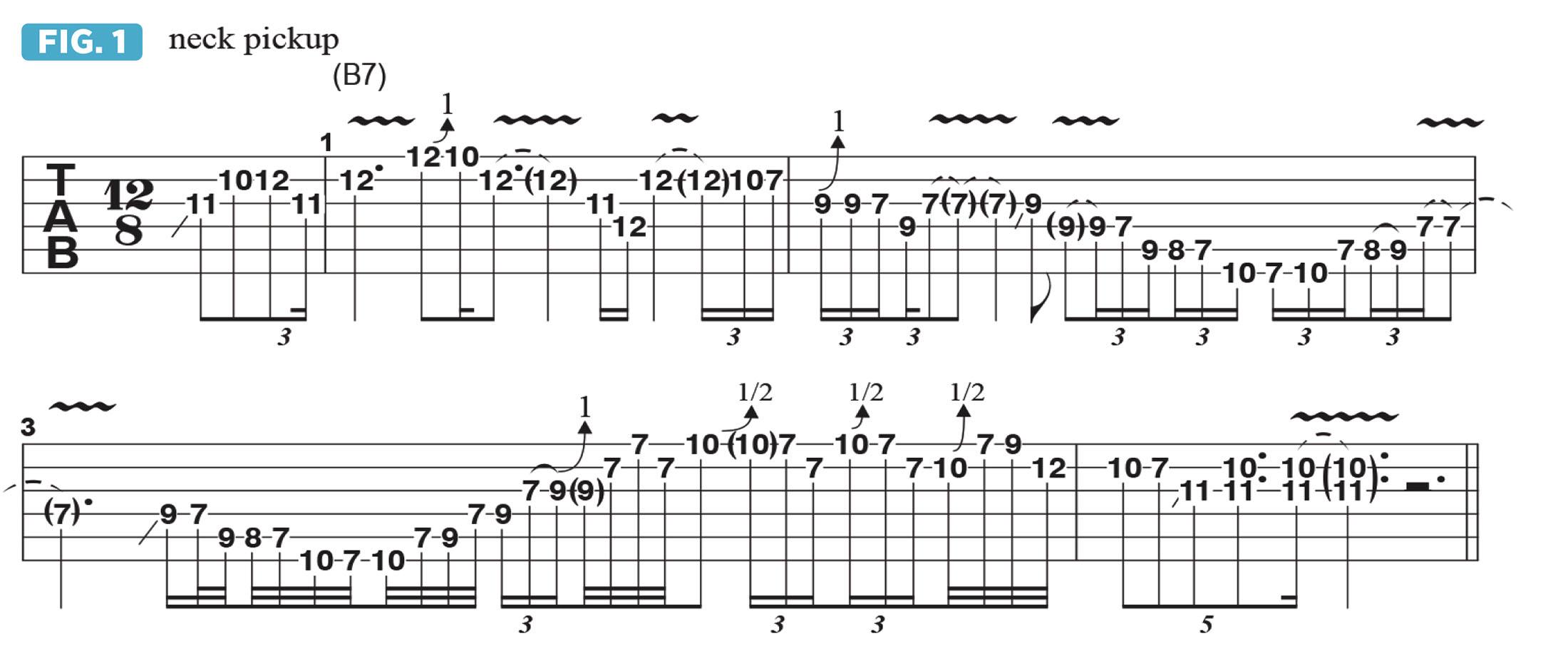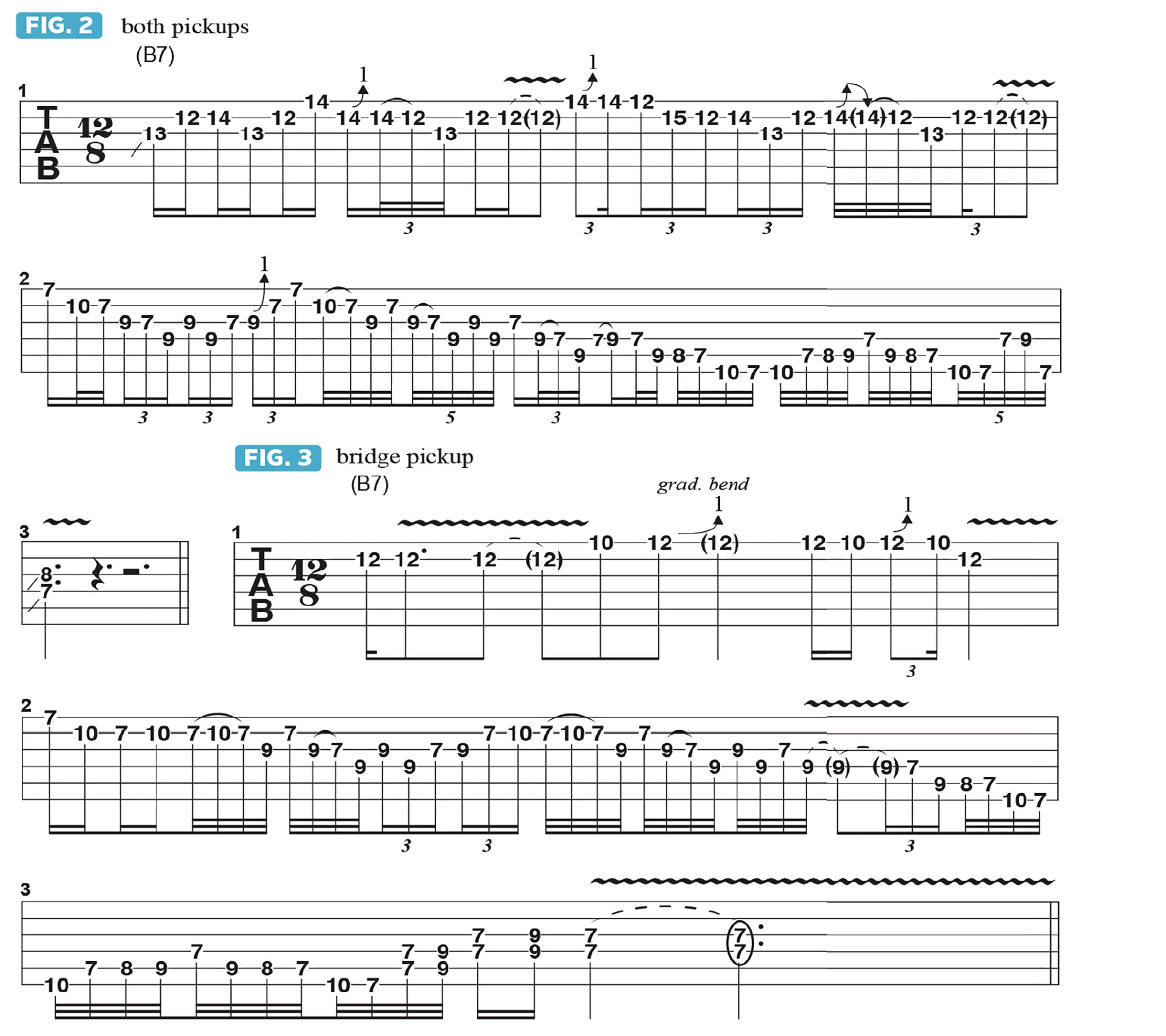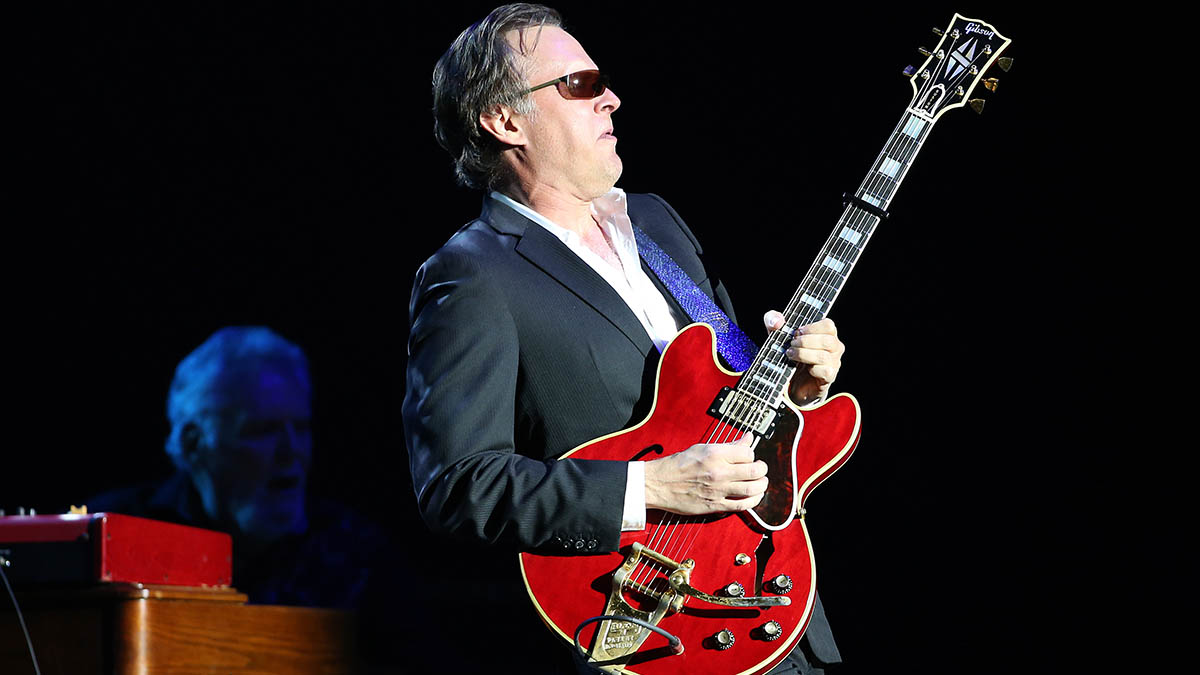“Imagine trying to convince your parents to buy you this thing in 1958!”: Joe Bonamassa shares his favorite Gibson Flying V licks
"Amos" is a very special guitar, with a very special sound, even if it was a little ahead of its time in 1958. In this tab and video lesson, Joe Bonamassa shows us what it can do
Today, I’d like to discuss “Famous Amos,” an infamous 1958 Gibson Flying V. This guitar originally shipped from Gibson on May 28, 1958, to Arthur’s Music Store in Indianapolis.
Sometime around 1959/1960, it was sold to a guy named Pete Mitchell, who was the guitar player for country music star Ernest Tubb. In 1965, Mitchell traded this Flying V for a Gretsch Country Gentleman. I don’t suggest doing that now! But that is what happened back in 1965.
In 1971 or ’72, Norm Harris from Norman’s Rare Guitars in Tarzana, California, purchased the guitar, so there’s a six- or seven-year blank spot in the guitar’s history. The V sat in Norm’s secret stash until 2015, when he was kind enough to sell it to me.
“Famous Amos” is an historic guitar, but not because of my association with it. There’s a provenance to this guitar, and I suggest that you do an Internet search on “Amos Flying V.” You’ll no doubt come across a picture of Amos Arthur, the proprietor of Arthur’s Music Store, holding the guitar in 1958 and seemingly thinking, “What the hell did they just ship me, and how am I going to get $275 for it?!”
Figure 1 features a four-bar example with the toggle switch set on the neck pickup. The tone is fat and warm but with loads of bite that would slice through any mix. This is due to the Korina body, along with the incredible sound of the original PAF (patent applied for) pickups.
In bars 1 and 2, I’m picking with my fingers, à la Albert King, the legendary blues master known for his use of a Flying V. In bars 3 and 4, I switch to using the pick to play the faster alternate-picked phrases.
These licks are played with a 128 feel in a slow-blues style, and in the key of B, with phrases based on the B blues scale (B, D, E, F, F#, A). I begin in 10th position and then shift down to 7th position in bar 2 before moving back up in 10th position.
All the latest guitar news, interviews, lessons, reviews, deals and more, direct to your inbox!
In Figure 2, I engage both pickups, with all dials set on 10. The tone is still exceptionally fat but with more cut and clarity, provided by the bridge pickup. The phrase in bar 1 is played in the style of B.B. King and is based on the B major pentatonic scale (B, C#, D#, F#, G#).
In Figure 3, I switch to the bridge pickup and play more phrases based on the B blues scale, leaning more towards the styles of Gary Moore and Cream-era Eric Clapton.
Imagine trying to convince your parents to buy you this thing in 1958! That was not happening for most aspiring guitar players at the time.
That year, they only sold about 100 of these instruments; the Gibson logs on the manufacture of the 1958 Flying V says they only made 81 of them, but there were probably closer to 100 built and shipped. And I have the original case too, which is the hardest thing to find when it comes to these late-Fifties V’s!
Joe Bonamassa is one of the world’s most popular and successful blues-rock guitarists – not to mention a top producer and de facto ambassador of the blues (and of the guitar in general).



